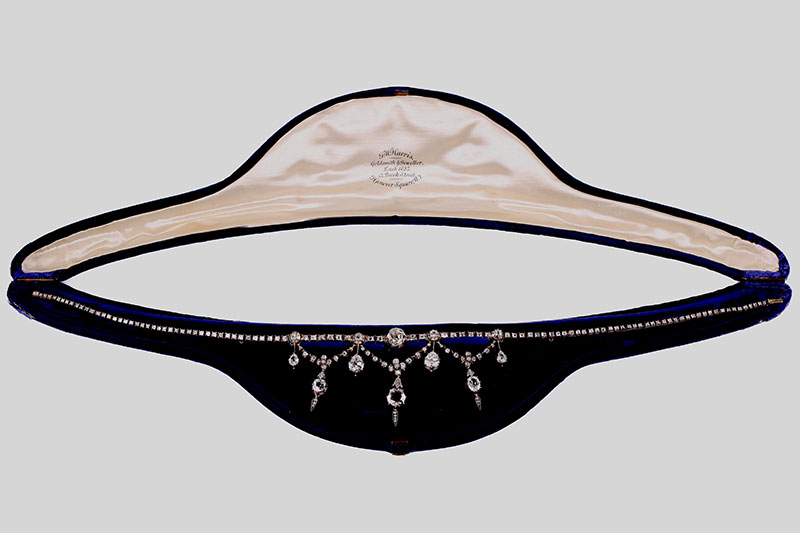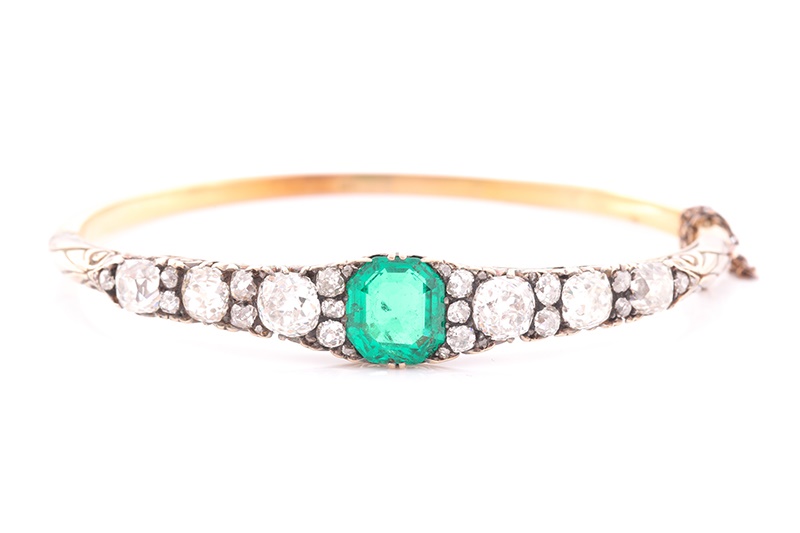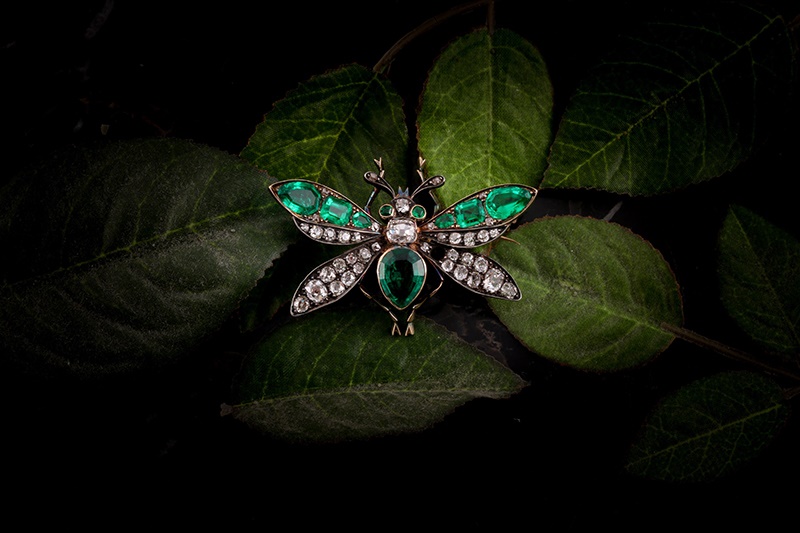How Can You Tell if Jewellery is Victorian?
Victorian jewellery refers to pieces produced during Queen Victoria’s reign
15/01/2024
One of the most captivating things about antique jewellery, is the story of its dazzling history. Victorian jewellery refers to pieces produced during Queen Victoria’s reign, which spanned from 1837 to 1901, making her the second longest-ruling monarch. This era began with candlelight and horse-drawn carriages and ended with electricity and automobiles, considering these advancements we can divide this age into three periods: The Romantic Period, the Grand Period, and the Aesthetic Period. It is important to have some appreciation of each of these spans of time to be able to accurately identify if a piece of jewellery is Victorian.
 An important late Victorian diamond garland necklace
An important late Victorian diamond garland necklace
The Romantic Period (1837-1861)
It was the beginning of Queen Victoria’s reign, but also of her courtship and engagement to Prince Albert. Victoria was very fond of her jewellery and very much a trendsetter amongst the British population whilst her taste was also admired abroad. Albert proposed with a snake ring, symbolic of their eternal love, it featured an emerald (the Queens’ birthstone, which was a popular tradition at the time), rubies for eyes and diamonds as a crown (perhaps a reference to her royalty). This ring ignited the desire for snake jewels which remain highly collectable to this day. Jewellery from this period was dominated by symbols of love, nature, and romance, hence the name. Hearts, birds, leaves, grapes, berries, garlands and floral motifs of roses, pansies, daisies and forget-me-nots, lockets, secret compartments, and hidden messages, were all typical designs of this time.
 A Victorian yellow gold diamond and emerald bangle
A Victorian yellow gold diamond and emerald bangle
The Grand Period (1861-1880)
In 1861, Queen Victoria suffered two devastating losses, first the passing of her mother, and then the untimely passing of her beloved Prince Albert. This sent her into a state of mourning that would last decades. As such, Victoria would only wear black, and this included her jewellery. Most of the pieces produced in these years were made to honour the memory of departed loved ones and featured onyx, jet, bog oak, black enamel, and seed pearls (symbolistic of tears).
It was also an exciting period of travel and exploration. The unearthing of ancient sites inspired a revival of designs imitating Egyptian, Etruscan, and Renaissance eras. The grand tour saw the wealthy travel into Europe, bringing with it the introduction of cameos, which were originally commissioned portraits of loved ones by Italian carvers brought back to England as gifts and souvenirs. Typically made from shell or lava, until the invention of celluloid in 1868, demand for cameos were at their peak. In 1867, high quality diamonds were discovered in South Africa which caused a surge in demand for this previously elusive gem.
A Victorian diamond and emerald insect brooch in the form of a fly
The Aesthetic Period (1880-1901)
Also referred to as the Late Victorian Period, The Arts and Crafts movement was emerging. Jewellery became more feminine, simplistic, and lighter. Diamonds and colourful gems soared in popularity with motifs of animals, bows, knots, crescents, stars, and flowers. Pieces started being manufactured with machines which led to cheaper options becoming readily available to the recently prosperous middle-class. It was also the era when platinum started to be used in jewellery.
In conclusion, it is evident that each sub-period had defining trends. Keeping these in mind, there are other clues that could indicate if a piece of jewellery is Victorian. Rich yellow gold, silver, copper, and steel were the most popular metals used; hallmarks can provide the exact content of these metals. The cut of gemstones will also indicate age; table and rose-cuts were commonplace until the mid-Victorian era, when highly faceted stones started coming to light. The fittings can also indicate dating; the spring bolt clasp was first used in 1840, the safety pin was invented in 1849, followed by the trombone clasp in 1850 and the spring ring clasp in 1900. Earrings were traditionally hooks until 1894 when screw back earrings were invented.
It can really be an exciting adventure to look at your antique jewellery in this new-found light. Why not discover if you have a genuine piece of Victorian jewellery? Our expert Jewellery Specialists here at Dawsons would be happy to assist you.
read more
Is Antique Jewellery Worth Anything?
Are Jewellery Valuations Free?
Is Victorian Jewellery Valuable?

Nicky Houston
Our Head of Jewellery, Watches & Silver... Nicky is a highly respected Auctioneer & Valuer, who had dreams of becoming an artist. Whilst she may not have made it as a successful artist herself, Nicky has helped many a customer to successfully sell and buy beautiful pieces of jewellery and works of art over her many years working within the auction industry.
Jewellery Silver & Objects of Virtue Watches
Do you have any antique or Victorian jewellery that you are considering selling?
With a global audience of over 10 million, Dawsons can ensure that you achieve the best price at auction.
Get in touch today for sales advice. Our Jewellery Team would be delighted to help you:
